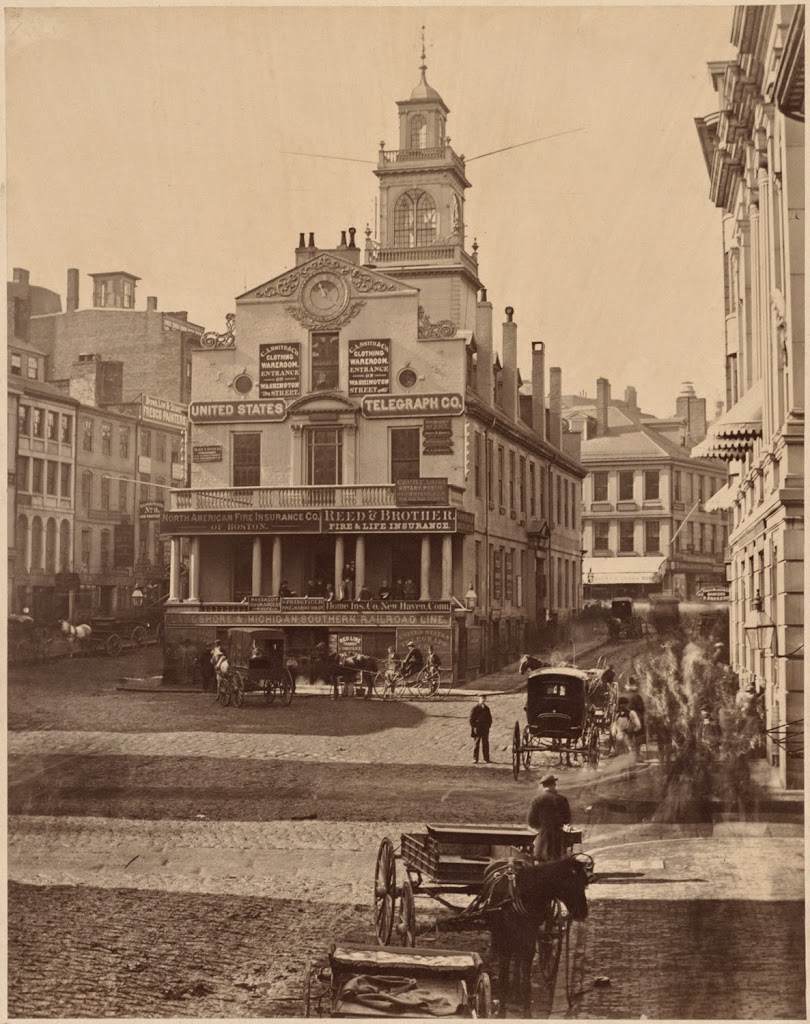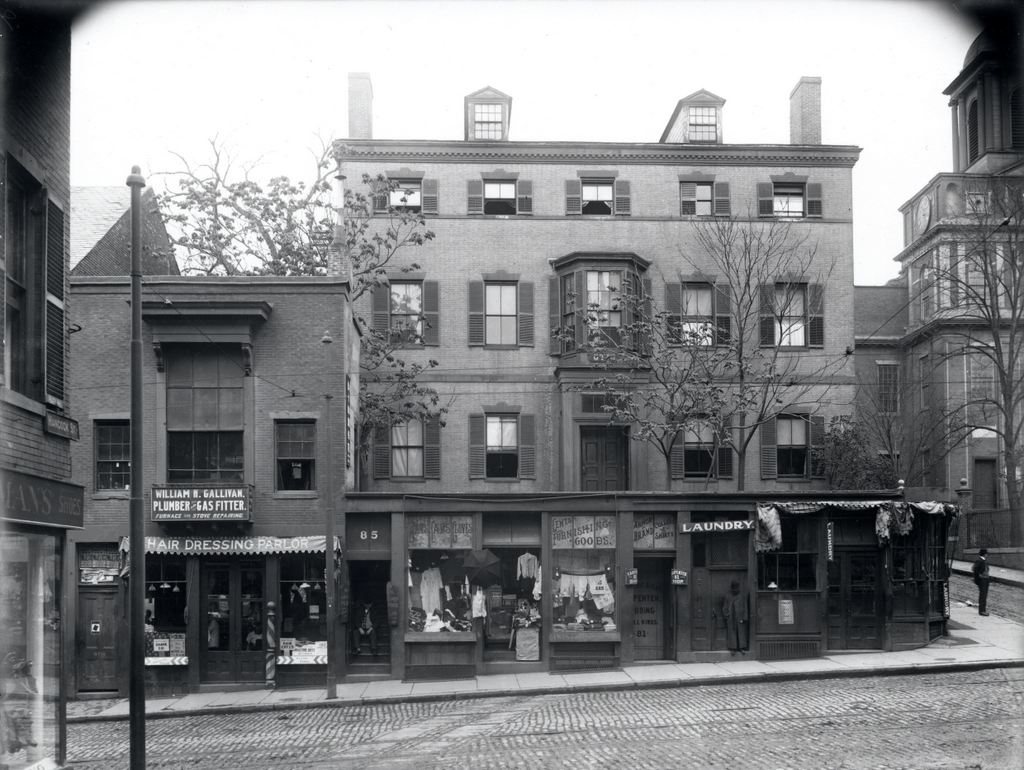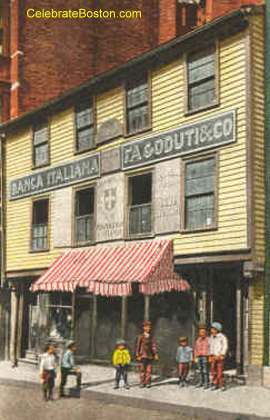odurandina
Senior Member
- Joined
- Dec 1, 2015
- Messages
- 5,328
- Reaction score
- 265
thanks!!

Holy Crap! Thanks Statler! I had no idea! So when did the whole idea of historical preservation take root in Boston? Pretty sure, in NYC, it really took off with the demolition of Penn Station. Was there something similiar in Boston? The West End maybe though, the demolition of the West End, Scollay Square, and huge swaths of the waterfront with the building of the Central Artery happened all around the same time.
Playing the role of whighlander today will be statler.
Believe it or not "those long buildings" actually did have extra stories tacked on for a while. They were restored to their original condition when the marketplace was redone in the early 70's.
You can see the Durgin Park flag to get your bearings.

To my knowledge it really got its start around 1960 when it was proposed to demolish the Old Corner Bookstore block (corner of Washington and School Street) (circa 1713 - 1718) for the Pi Alley Garage complex. Historic Boston, Inc. was formed by a group of wealthy local citizens with adaptive reuse and preservation aims. They and the Architectural Heritage Foundation (who did Old City Hall, and the planing for Quincy Market) really jump-started the idea of adaptive reuse (rather than saving buildings as museums).
MYTH AND MEMORY:
THE LEGACY OF THE JOHN HANCOCK HOUSE
by
Rebecca J. Bertrand
A thesis submitted to the Faculty of the University of Delaware in partial fulfillment of the requirements for the degree of Master of Arts in American Material Culture
Spring 2010
....In an 1863 address at the Old South Meeting House, Wendell Phillips cited the failure to save the Hancock house as motivation to preserve structures with connections to Revolutionary Boston..... In June 1863, public outcry against the demolition spread throughout the city.
A broadside published by Thomas Oliver Hazard Perry Burnham on June 6, 1863 exclaimed, “Bostonians! Save the Old John Hancock Mansion/There is time yet, although the work of Demolition Has Commenced (Figure 15).” The proposed razing of the structure was decried “an act of modern vandalism.” The Boston Evening Journal lamented, “the demolition of this relic of the past, and of some of its proudest historical associations cannot fail to cause regret in many minds.” By August 1863, the Hancock house was demolished and seemed destined to be forgotten by the citizens of Boston.
Before the destruction of the house, however, architect John Hubbard Sturgis completed a set of architectural measured drawings that detailed the house with precision The creation of these measured drawings allowed for the possibility of an accurate and exact recreation of the house at a later date....
In efforts to save the Old State House, newspapers reported, “the State House is not entirely safe in the hands of a people who could let the old Hancock House go.... In the 1906 efforts to save the Paul Revere House, Appleton referenced the failed attempts to save the Hancock house in an effort to stimulate support for the Revere house restoration. Marc Callis cited the Hancock house as a martyr to the advancement of the historic preservation movement in his 2004 article “The Beginning of the Past: Boston and the Early Historic Preservation Movement, 1863-1918.” In an assessment of later Boston preservation efforts in the early twentieth century, Callis reiterates the central role that the house played in future public and private preservation efforts.
JeffDowntown -- Historic Preservation in Boston goes back a whole lot longer than that although it was fits and starts for a while
The trigger was when Mr. Hancock's Mansion bit the dust in 1863 after two attempts by Hancock family to sell it to the Commonwealth as a proper Governors Mansion and finally to give it to the City of Boston. The house was sacrificed to provide for the construction of two attached town homes on Beacon Hill. The town homes in turn were demolished in 1917 for the construction of the Marble West Wing addition to the New State House
In a Master's Thesis on the topic Rebecca J. Bertrand discusses how the fall of the house directly led to the preservation of other Revolutionary War sites in Boston which had fallen from grace including the Old State House, the Old South Meeting House and Paul Reveres's House and the formation of the Society for the Preservation of New England Antiquities (SPNEA) by William Sumner Appleton [today known as Historic New England]
http://www.historicnewengland.org/
In her thesis Rebecca J. Bertrand quotes some of the earliest historic preservationist efforts on the iimpact of the loss of the Hancock House:
http://udspace.udel.edu/bitstream/handle/19716/5847/Rebecca_Bertrand_Thesis.pdf?sequence=1
Whigh, I realize that history -- but those are all museums today. I was specifically commenting on the type of preservation evident at Quincy Market, adaptive reuse. It is a more recent phenomenon to get preservation to pay for itself.
I don't think it is entirely new, even in the last few decades. Older buildings with "good bones" have always tended to be reused rather than demolished. It just makes practical sense.
Just that more recently there is a bit more of a government permitting framework around delaying (at the discretion of the municipality) demolition of old buildings to encourage owners to look at adaptive reuse before knocking buildings down.
Whigh, I realize that history -- but those are all museums today. I was specifically commenting on the type of preservation evident at Quincy Market, adaptive reuse. It is a more recent phenomenon to get preservation to pay for itself.



http://www.bizjournals.com/boston/news/2016/09/22/faneuil-hall-merchants-claim-construction-is.html
McCormick & Scmick's is not happy with the construction - they're claiming it has cost them business this past summer.
The article is behind the paywall but they were discussing this on NECN Business. I believe they're bringing fourth a lawsuit.
Maybe the overpriced mediocre food has something to do with it. Abutting businesses should not be able to sue when a parcel next to them is under construction, that's insane.
